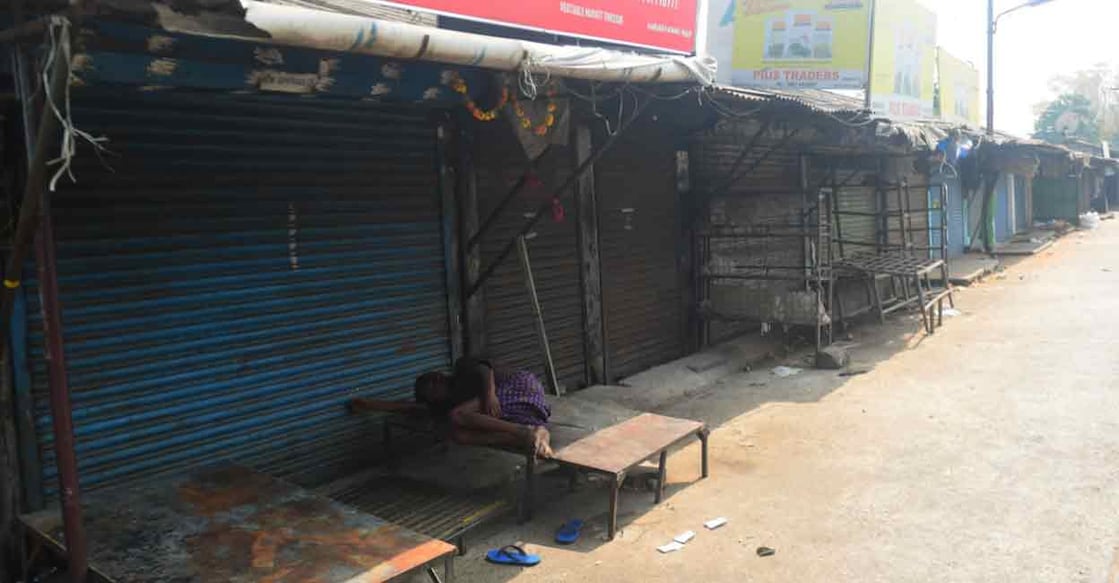Explained: Why 2-day general strike in Kerala hurt poorest of poor most

Mail This Article
Various research groups have come up with different figures for the volume of loss suffered by Kerala a day on account of any kind of shutdown.
The figures range from Rs 640 crore (which is double Kerala's average daily revenue collection of Rs 300-320 crore) to Rs 2740 crore (which is Kerala's average daily GDP derived using the simple calculation of dividing the total GSDP by 365 days).
The loss could be somewhere in between. Truth is, the economic impact of a one- or two-day strike has never been officially assessed. Nonetheless, in the case of certain sectors, a reasonable understanding can be acquired from available figures.
Take, for instance, hotels and restaurants, one of the worst affected sectors in a shutdown or 'hartal'. In their case, business lost is lost forever. In the case of a white goods shop or even a provision store, a loyal customer's purchase decision is only postponed for a day or two.

Tasteless closure
It is officially estimated that the 5000-odd hotels (which provide lodging in addition to food) in Kerala have annual revenue of Rs 6000 crore. Therefore, on average, they earn nearly 17 crore daily.
As for the nearly 50,000 restaurants in Kerala, they earn nearly Rs 7000 crore annually. So, on average, restaurants in Kerala pocket Rs 20 crore daily. Together, assuming there is a complete closure of their business, their total daily loss would be Rs 37 crore. Since the strike is for two days, their losses could mount up to Rs 74 crore.
It is also a fact that the impact would be far more severe than what the figures suggest. The tremors of such a loss are felt far outside the perimeter walls of these businesses. In the case of both hotels and restaurants, nearly 60% of their expenditure is on the purchase of raw materials.
These purchases stop on the day of a shutdown; neighbourhood provision stores, vegetable vendors and homestead farmers would be hit. On top of this, a dysfunctional hotel or restaurant could sour a tourist's experience.

Misfortune of the unorganised
It is also important to know what happens to the employees of these hotels and restaurants, the group for which the two-day general strike is said to be fighting. Most of the employees (chef, security, room attendants, supervisors, front office staff, cleaners, waiters, lift operators, gardeners) are on contract. They are paid only if there is work.
It is an undisputed truth that a strike affects the unorganised workers the most. A Labour Department study in 2010 had revealed that nearly 95 percent of those in the unorganised sector – fish workers, construction workers, small and marginal farmers, housemaids, leather workers, weavers, artisans, workers in brick kilns and stone quarries, workers in sawmills, oil mills, toddy tappers, scavengers, daily wagers of all kinds – are deprived of a day’s work and wages as a result of a 'hartal'.
They are the ones with low job security, no job contracts, nil social protection, lesser chances of upward mobility, and no paid holidays.
Organised luck and 'dies-non' illusion
On the other hand, the striking employees in the organised sector will have their salaries intact, though the government had clamped 'dies-non' (no work no pay) late on March 28, the first day of the strike. If the past is any guide, the dies-non declaration was just a ruse to keep the High Court in good humour.

In 2019, for instance, the government slapped 'dies-non' on government employees and teachers who had participated in the two-day strike called by trade unions on January 8 and 9. But a month later, the declaration was withdrawn.
Invisible majority
The burden of the two-day strike, therefore, falls solely on the workers in the unorganised sector. Their presence in the total workforce is overwhelmingly huge.
When Onmanorama talked to a top CITU leader about the plight of unorganised workers, he said "universal social security for all informal sector workers" was one of the demands of the general strike.
When this demand is placed alongside the fact that the government has no database on unorganised workers, the leader's claim rings hollow. How is the government to provide social security when it has no idea who the beneficiaries are?
The government is clear about the number of workers in the formal sector in Kerala: 12.5 lakh (2021 figures). When it comes to the unorganised sector, it is only a reasoned guess that officials can provide.
Official figures say that there were 40 lakh employment seekers in Kerala in 2021. A top Labour Department official said that a "good proportion of these job seekers and more than double the number who have registered their names in the employment exchanges are in the unorganised sector". This works out to between 80-85 lakh workers in the unorganised sector.
Even this could be a conservative estimate because according to the 2011 census, the total number of workers in Kerala is 116.2 lakh.
Unorganised sector loss
Let us stick to the conservative figure of 80 lakh unorganised workers. Let us also assume, much against logic, that 30 lakh of them would somehow get paid on a strike day. This leaves 50 lakh unorganised workers who will have no work on a strike day.
Now, assuming that the average daily wage is Rs 500, the loss in earnings for unorganised workers in Kerala would be Rs 50 crore for the two strike days.


